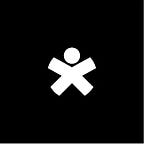Working remotely with clients: tools and practices
We have established through the years a reliable remote work environment to embrace the characteristics of a new market such as international clients, evolving global situations, multinational issues as well as reducing travel and lodging expenses.
We are accustomed to working remotely, it is a treat rooted in our DNA: we’re scattered through different venues, we are working with clients in different parts of the world and so we can’t be physically present all the time. Hence we have built a robust framework of practices and tools that let us preserve both our culture and design process, and work as effectively as if we were on site.
We have already described in detail the tools and practices we use to work remotely within our teams, but now we will focus more on the activities with clients and partners.
Through the years we have conducted different types of workshops, organized presentations, moderated debates and workshops, held lectures and courses and habilitated remote working activities and processes for our clients.
We are accustomed to working remotely, it is a treat rooted in our DNA: we’re scattered through different venues, we are working with clients in different parts of the world and so we can’t be physically present all the time. Hence we have built a robust framework of practices and tools that let us preserve both our culture and design process, and work as effectively as if we were on site.
When the COVID-19 emergency hit our clients and us in a way no one could have ever predicted or avoided, we were already prepared — At least a good thing amidst all this mess — , and we can share with them (and with you) our remote working framework.
The cornerstone of our framework
Remote working can be as effective as working face to face but requires more discipline; not having any clear principles, rules, or not engaging in constant practice, may lead to a lack of it.
We have put 4 pillars as the cornerstone of our remote work framework
Agile collaboration
Every team in Sketchin, and even Sketchin as a whole, works following the Agile Methodology, which is characterized by the division of tasks into short phases of work with frequent planning reassessment and adaptation, thus making people on the client-side learn the fundamentals of the method and become an active part of the design process.
Efficient communication
In our experience, if each meeting is carefully organized communication is seamless. Live presence is not strictly necessary. We put extra care in making every piece of communication clear and effective. Designers sometimes have a special jargon that clients don’t get. Defining a common language to allow everyone to fully understand each other is one of the most important tasks in every project. It is especially important when it involves remote activities.
Valuable planning tools
We ensure stakeholders complete visibility of the project as a whole, and guarantee their constant participation through already-tested remote collaboration systems. This way, work proceeds as planned and everyone is informed on every task and milestone.
Continuous improvement
The smart working is well consolidated among our teams, but it might not be so for others. We work together with our clients to improve this aspect and increase efficiency.
The practices of our Remote Work Framework
In a design process, practices are many and different and might include external stakeholders with different levels of involvement. From the envisioning and setup phase to the final delivery.
Research, brainstorming and testing
- Remote interviews with screencast and video calls sessions
- Remote Agile tests conducted with specific screencast solutions, session recording and collaborative remote debriefs that involve all the stakeholders who can comment and reply on the spot.
- Brainstorming remote sessions with collaborative tools to conduct workshops according to different distribution clusters.
- Participants’ onboarding protocols with established solutions such as written or video instructions.
- Specific running protocols for remote brainstorming that include previously-designed canvas, as well as individual and group tasks.
Design and delivery
- Weekly call for the design review at a fixed date and time.
- Collaborative prototyping tools to gather real-time feedback from multiple users and locations.
- Screencast pitch of design solutions between Sketchin and stakeholders
- Design version control, parallel working and secure delivery.
- Remote Co-Design Workshops with well-proven and flexible protocols that consider also technical support time for participants.
Planning and working
- A dedicated shared communication channel between Sketchin and stakeholders
- A shared and secure document repository
- A permanent virtual room that can be joined also available on the phone
- Being ready for remote meetings with headsets, microphones and a safe workstation
- Daily walk-ins and walkouts for task visibility and support requests
- A shared calendar between Sketchin Team and stakeholders
Learning to work remotely is a cultural process, you have to learn to rely on people that are far from you, and you miss all the information that comes from the physical presence (mood, behaviour, tone of voice…).
We have thus to build trust by design.
Curious to know how to use our framework? Drop us a line at hello@sketchin.ch
In Sketchin we have adapted our practices to allow Smart Working activities. Here you might read how we did it in a series of two articles we published last year
